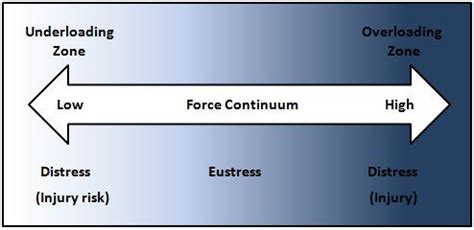How to optimize progressive overload for continuous strength gains and peak performance?

Understanding Progressive Overload
Progressive overload is the fundamental principle driving strength and muscle growth. It dictates that to continually improve, you must consistently challenge your muscles beyond their previous limits. Without progressive overload, your body adapts to the current stimulus, and progress stalls. It’s not just about lifting heavier weights; it encompasses a variety of methods to increase the demand on your musculoskeletal system over time.

The Core Principles of Applying Progressive Overload
While increasing weight is the most common method, there are several effective ways to apply progressive overload to ensure continuous gains:
- Increase Resistance/Weight: The most straightforward approach. Gradually lift heavier weights as you get stronger.
- Increase Repetitions: If you can’t increase weight, try to perform more reps with the current weight.
- Increase Sets: Adding more sets to an exercise can increase total training volume.
- Improve Form and Technique: Executing an exercise with stricter form often makes it harder, even with the same weight.
- Decrease Rest Times: Reducing the rest period between sets increases the density of your workout, challenging your cardiovascular system and muscular endurance.
- Increase Time Under Tension: Slowing down the eccentric (lowering) or concentric (lifting) phase of an exercise can make it more challenging.
- Increase Frequency: Training a muscle group more often throughout the week.
- Introduce New Exercises: Varying your exercises can challenge muscles in new ways, leading to fresh adaptations.
Advanced Strategies for Optimization
To truly optimize progressive overload for long-term gains and avoid plateaus, incorporating advanced strategies is key:
Periodization
Periodization involves systematically varying your training variables (intensity, volume, exercise selection) over planned cycles. This helps manage fatigue, prevent overtraining, and ensure you peak at optimal times. Linear periodization, undulating periodization, and block periodization are common models. It allows for phases of high intensity, high volume, and deloads, ensuring continuous adaptation without burnout.
Deload Weeks
Regularly scheduled deload weeks are crucial. A deload involves intentionally reducing training volume and/or intensity for a short period (typically one week). This allows your body to recover fully, repair tissues, and reduce accumulated fatigue, preparing you for another productive training cycle. Ignoring deloads often leads to plateaus, injury, or burnout.

Tracking and Adaptation for Peak Performance
Effective progressive overload relies heavily on meticulous tracking and intelligent adaptation. Keep a detailed training log noting exercises, sets, reps, weight, and perceived effort. This data allows you to:
- Identify Progress: See where you are making gains and where you are stalling.
- Plan Future Workouts: Make informed decisions on when to increase weight, reps, or change variables.
- Recognize Plateaus: Understand when you need to adjust your strategy, perhaps by changing exercise variations, rep schemes, or incorporating a deload.
Don’t be afraid to adjust your plan based on how your body feels. Listening to your body is just as important as following your logbook.

The Role of Nutrition, Recovery, and Consistency
Progressive overload isn’t solely about what happens in the gym. Your ability to recover and adapt to increasing demands is heavily influenced by external factors:
- Nutrition: Adequate protein intake is vital for muscle repair and growth. Sufficient carbohydrates fuel your workouts and replenish glycogen stores. Overall caloric intake must support your training goals.
- Sleep: Quality sleep is when most of your physical and hormonal recovery occurs. Aim for 7-9 hours of restful sleep per night.
- Stress Management: Chronic stress elevates cortisol, which can hinder recovery and muscle growth.
- Consistency: Sporadic training will yield sporadic results. Regular, consistent effort over weeks, months, and years is paramount for continuous progress.

Common Pitfalls to Avoid
While the concept of progressive overload is simple, its application can be tricky. Avoid these common mistakes:
- Ego Lifting: Sacrificing proper form to lift heavier weights significantly increases injury risk and reduces muscle activation.
- Ignoring Recovery: Pushing too hard without adequate rest, sleep, and nutrition leads to overtraining and stalled progress.
- Lack of Tracking: Without a log, it’s impossible to systematically apply overload or identify patterns.
- Program Hopping: Constantly changing your routine prevents you from adequately applying progressive overload to specific exercises.
Conclusion: Your Path to Continuous Growth
Optimizing progressive overload is a continuous journey of intelligent effort, adaptation, and self-awareness. By understanding its various facets, systematically applying different methods, meticulously tracking your progress, and prioritizing recovery, you will unlock a pathway to sustained strength gains, enhanced muscle development, and ultimately, peak physical performance. Embrace the process, be patient, and consistently challenge yourself – that’s the true secret to long-term success in strength training.









